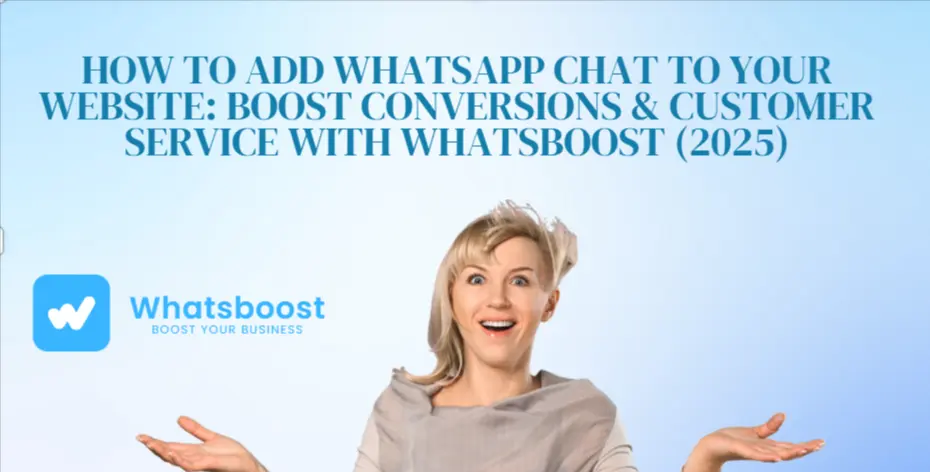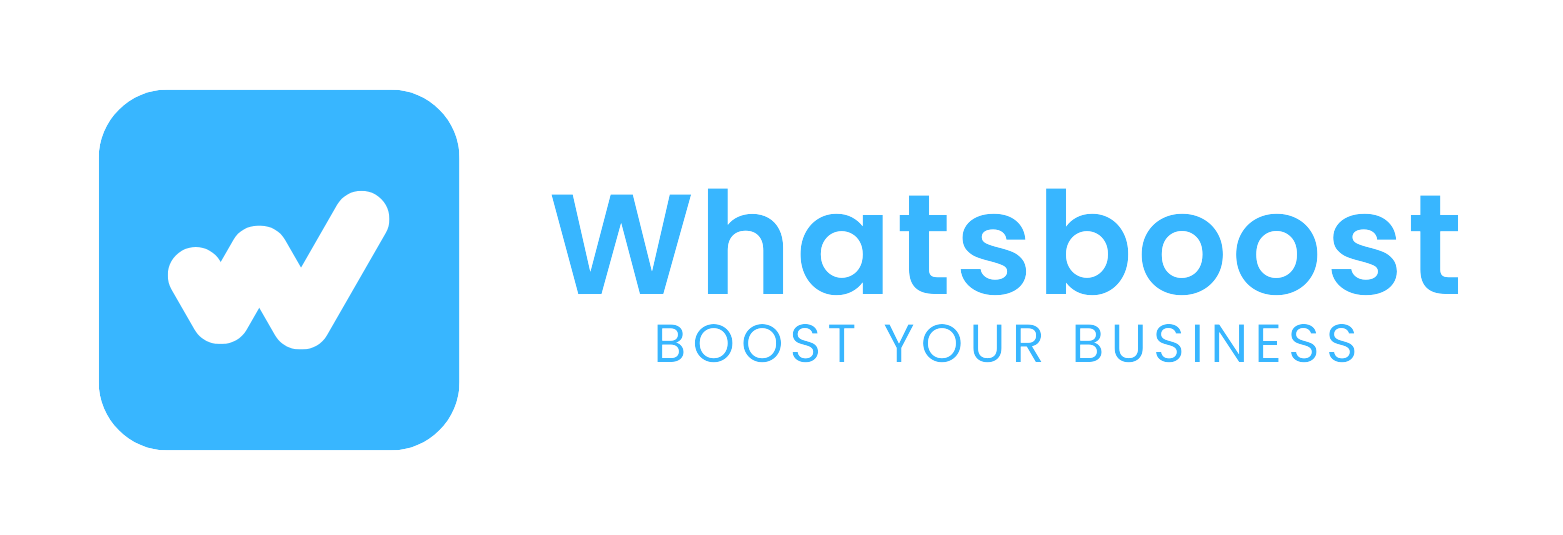
How to Add WhatsApp Chat to Your Website: Boost Conversions & Customer Service with Whatsboost (2025)
Discover how to integrate WhatsApp chat with your website in minutes. Learn step-by-step setup, top features, creative use cases, optimization tips, and Whatsboost’s secure, scalable solution for business.
Website visitors today expect instant answers—anything less can result in missed leads and lost sales. Studies show that sites with live chat tools experience up to 40% higher conversion rates, with chat-originated sales averaging greater order value compared to email or forms. WhatsApp, already the world’s top messaging platform, is rapidly becoming the gold standard for web chat integration thanks to its convenience and global reach.
For businesses, integrating WhatsApp chat on your site is more than a trend; it’s now a proven tactic to build trust, streamline support, and drive revenue. This guide explains, in detail, how to set up WhatsApp website chat with Whatsboost—along with tips, real-world use cases, and actionable strategies for maximizing your investment.
Why Add WhatsApp Chat to Your Website in 2025?
Instant Engagement: Most web traffic bounces within minutes if questions go unanswered. WhatsApp chat removes barriers, connecting visitors to support or sales instantly.
Higher Trust and Familiarity: People already use WhatsApp daily; seeing the logo builds credibility.
Mobile-Ready: With the majority of web users on smartphones, WhatsApp makes customer contact truly frictionless—often requiring just a single tap.
Improved Conversions: Real-time chats not only resolve doubts faster but also increase average order value. E-commerce sites with chat solutions have seen cart recovery and upsell rates jump by 55%.
Unified Communication: All interactions—no matter where they begin—can be managed and tracked in a single, centralized WhatsApp workflow.
Comparing Common Approaches: Which Integration Is Right for Your Business?
1. Click-to-WhatsApp Button
Ideal for basic contact needs, this adds a floating WhatsApp icon to your site. Visitors click, are redirected to WhatsApp, and can immediately start a chat.
Benefits: Quick install, universally supported.
Limitations: Lacks automation, analytics, and branded options.
2. Advanced WhatsApp Chat Widget
A customizable widget powered by a platform like Whatsboost brings professional branding, automated greetings, operating hours, offline forms, and analytics. Visitors chat in one click, with smart routing and autoresponses.
Benefits: Highly brandable, includes helpful features, integrates with analytics, enables workflow customization.
Limitations: Requires a third-party subscription for advanced functions.
3. Deep CRM and Workflow Integration
Larger organizations may benefit from CRM-connected WhatsApp chat solutions. These allow message routing to the right team, syncing of chat transcripts, and rich customer data tracking.
Benefits: Seamless data flow, multi-agent handoff, cross-channel automation.
Limitations: More setup required, typically used by larger teams.
How to Add WhatsApp Chat to Your Website with Whatsboost
Step 1: Create Your Whatsboost Account
Visit the Whatsboost website and enroll (free trial available for new users).
Step 2: Design and Configure the Chat Widget
Choose button style (icon, text, floating bar).
Set preferred location (bottom corners or fixed).
Adjust color, branding, and language as needed to match your site.
Set business hours and auto-response rules. This is essential for user clarity if your team is offline.
Step 3: Craft Welcoming and Conversion-Focused Automated Messages
Example:
“Hi! Welcome to [Your Company]. How can we assist you today?Product Information
Order Support
Custom Quote”
Use buttons, quick replies, or short menus for common needs.
Step 4: Install on Your Website
Copy the Whatsboost code snippet and place it before the </body> tag on all relevant site pages.
No developer needed—installation takes just a few minutes.
Step 5: Test and Continuously Optimize
Check widget functionality on mobile and desktop devices.
Test greetings and automated text for engagement. Conduct message performance experiments to determine the highest-converting variations
Ensure message triggers and handoff to real agents (if needed) works smoothly.
Creative Use Cases for WhatsApp Website Chat
E-commerce:
Field pre-purchase product questions, send personalized recommendations, recover abandoned carts, and confirm deliveries.Professional Services:
Automate appointment scheduling, consultations, and post-service follow-ups for clinics, salons, or accountants.B2B and SaaS:
Qualify leads, schedule demos, and provide onboarding support to maximize conversion and retention.Educational Institutions:
Handle course inquiries, collect applicant information, and deliver reminders about admissions or deadlines.Healthcare:
Book patient appointments, send reminders, and offer secure channels for follow-up questions.
Advanced Optimization & Best Practices
Placement Matters:
Place the chat icon on the bottom right for maximum visibility and clicks.Clear, Action-Based Text:
“Talk to Us Now” or “Instant Help” drives more engagement than generic “Contact.”Humans And AI Both Get Involved
Implement AI for frequently asked questions but design smooth escalation paths for specialized support.
Respect User Privacy:
Inform users how their information will be used and stored. A privacy-first approach increases opt-in rates and trust.Mobile-Friendly Design:
Over two-thirds of chats originate from mobile devices. Confirm button size, message spacing, and navigation is seamless on all screens.Monitor Data and Iterate:
Check chat engagement rates, response times, and conversion from visitors to leads. Adjust auto-messages periodically to reflect surge trends or product updates.
Mistakes to Avoid When Implementing WhatsApp Website Chat
Relying on a personal number rather than a verified business account.
Failing to provide offline/after-hours options (such as a contact form or call-back request).
Delayed or missed responses—every chat should have a timely fallback, even if it’s a temporary acknowledgement.
Pushing popups or aggressive prompts; balance is key to avoid frustrating users.
Frequently Asked Questions
Q: Is WhatsApp website chat secure for business use?
A: Yes, with proper API integration, all conversations are encrypted and managed on official business channels.
Q: Can multiple team members handle incoming chats?
A: Yes, Whatsboost supports multi-agent assignment, delegation, and conversation routing for larger teams.
Q: Does it work with any website platform?
A: Whatsboost’s widget is compatible with nearly all major web builders and content management systems—WordPress, Shopify, Wix, and more.
Conclusion: Modern Engagement Starts with a WhatsApp Widget
Integrating WhatsApp chat on your website is no longer optional—it's a smart strategy for any business wanting to grow conversions and retain loyal customers. A well-designed, automated chat tool blends instant support, customer trust, and scalable communication—all in a platform customers already use and love.
Whatsboost makes sophisticated WhatsApp web chat easy to implement, secure to manage, and effortless to optimize—empowering brands to connect better, sell more, and deliver standout service every day.
Ready to evolve your business website? Start using WhatsApp chat today and turn every visitor into a loyal customer.
